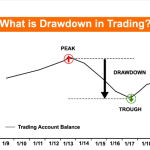
By ATGL
Updated September 24, 2024
Day trading offers opportunities for profit, but it also comes with complex tax obligations. Figuring out how these taxes work and how to minimize them can help you maximize your earnings. In this article, we’ll cover the tax rates applied to day trading income, key strategies for reducing your tax liability, and answers to common questions about taxation in day trading.
Day Trading Tax Implications: Understanding the Basics
First, grasp how the IRS views day traders. The IRS distinguishes day traders from casual investors by how frequently they trade, the income they generate from it, and whether they rely on day trading as their primary livelihood.
How Does the IRS Determine If You’re a Day Trader?
To qualify as a day trader for tax purposes, the IRS considers several factors:
- Substantial activity: Traders must execute trades nearly every day the market is open.
- Seeking profit from short-term market swings: Day traders primarily earn from frequent buying and selling instead of long-term investing.
- Full-time engagement: Trading needs to be your main occupation or at least a significant source of income.
Do You Pay Taxes on Day Trading?
Yes, any profits from day trading are taxable, and losses can be deductible. Profits from trades held for less than a year are taxed as short-term capital gains, while longer holding periods result in long-term capital gains taxes, which have lower rates.
Day Trading and Taxes: Short-Term vs. Long-Term Capital Gains
Day trading profits typically fall under short-term capital gains. These are taxed at the same rate as ordinary income, which ranges from 10% to 37%, depending on your income bracket. This differs significantly from long-term capital gains, which are taxed at reduced rates of 0%, 15%, or 20%.
When managing your tax liability, know the differences between capital gains and dividends, as both contribute to your overall tax burden. Dividends are taxed differently from capital gains, with qualified dividends generally taxed at the same rate as long-term capital gains, making them more favorable for tax planning.
Tax Rates for Short-Term Gains
Short-term gains can push you into higher tax brackets, as these are added directly to your annual income. For example, if you earn $80,000 from other sources and generate $50,000 in short-term trading gains, you could fall into the 22% or 24% tax bracket.
Tax Rates for Long-Term Gains
While not common for day traders, any positions held for over a year qualify for long-term capital gains taxes. These rates — 0%, 15%, and 20% — are typically lower than short-term capital gains rates, depending on the overall income.
Qualification for Trader Tax Status
To lessen the tax burden, many day traders aim to qualify for Trader Tax Status (TTS). This status allows day traders to treat their activities as a business, unlocking access to additional tax benefits.
With TTS, traders can:
- Deduct business-related expenses, such as software, subscriptions, office space, and educational resources.
- Use mark-to-market (MTM) accounting to avoid the wash-sale rule (discussed later) and deduct unrealized losses at year-end.
- Make retirement plan contributions through structures like SEP IRAs, reducing taxable income while saving for retirement.
How To Apply for Trader Tax Status
You don’t file a formal application to obtain TTS. Instead, you must prove you meet the IRS’s guidelines for full-time traders, including substantial trade volume and frequent, consistent trading. Keep detailed records of your trades to demonstrate that trading is a business and not a hobby.
Best Tax Structure for Day Traders: Mark-to-Market Accounting Explained
Mark-to-market accounting is one of the most valuable tools for active traders. Under this method, traders report all positions on the final trading day of the year as if they were sold, locking in gains or losses for that tax year.
Potential Tax Benefits of Mark-to-Market
- No wash-sale rule: MTM eliminates the wash-sale rule, allowing traders to claim all losses immediately without waiting for a repurchase to “reset” the loss.
- Loss deductions: Unrealized losses become deductible, providing significant tax relief in volatile years.
To elect MTM, attach a statement to your tax return by the IRS’s deadline for the year in which you plan to start using MTM accounting.
Deductions for Day Trading Business Expenses
Day traders with TTS can deduct a variety of expenses related to their trading activities.
What Can Day Traders Write Off on Taxes?
Some of the most common deductions include:
- Home office expenses: Rent or mortgage interest, utilities, and internet costs.
- Trading tools and software: Platforms, charting software, and news feeds.
- Professional fees: Costs for accountants or tax professionals who assist with day trading tax preparation.
Maintain detailed receipts and logs of every expense, especially in areas like home office deductions where the IRS may require further documentation.
The Wash-Sale Rule: What You Need To Know
The wash-sale rule prevents traders from deducting losses on securities sold at a loss and repurchased within 30 days. This can be a challenge for day traders who frequently buy and sell the same stocks.
If a loss occurs and you repurchase the same or substantially identical security within 30 days, the loss is disallowed and added to the cost basis of the new security, deferring your deduction until you eventually sell at a gain or outside the 30-day window.
Strategies To Avoid Wash-Sale Complications
- Trade different securities: Avoid purchasing identical or closely related securities within 30 days.
- Use mark-to-market accounting: As mentioned earlier, MTM accounting eliminates the wash-sale rule for those who qualify, making it a preferred day trading strategy for many active traders.
Taxes on Day Trading: Common Tax Errors Made by Traders
It’s easy to make mistakes when dealing with tax obligations. Here are a few pitfalls to avoid:
- Not tracking cost basis accurately: Failure to monitor cost basis can lead to under-reporting or over-reporting income.
- Missing deadlines for MTM elections: Missing the election deadline can result in unexpected wash-sale rule complications.
- Failing to categorize expenses properly: Incorrectly classifying personal expenses as business-related can trigger audits or penalties.
Tips for Effective Tax Planning for Day Traders
Tax planning helps you reduce your tax burden and maximize returns.
You can shelter part of your gains by using tax-advantaged accounts like Roth IRAs or Health Savings Accounts (HSAs). Though day trading within these accounts can be tricky due to contribution limits and penalties for early withdrawals, they offer tax-deferred or tax-free growth.
Optimizing Trading Strategies for Tax Minimization
- Spread out trades: Instead of selling at the end of the year, consider realizing losses earlier to offset gains.
- Consider professional help: A tax professional who specializes in day trading can help you navigate these complex rules and create a tailored tax strategy.
Discover the Best Resources and Platform Used by Professional Traders
Professional traders rely on accurate information and powerful trading platforms to optimize their decisions. To access premium tools, insights, and resources that can enhance your trading strategies and tax planning, sign up for an Above the Green Line membership today.






